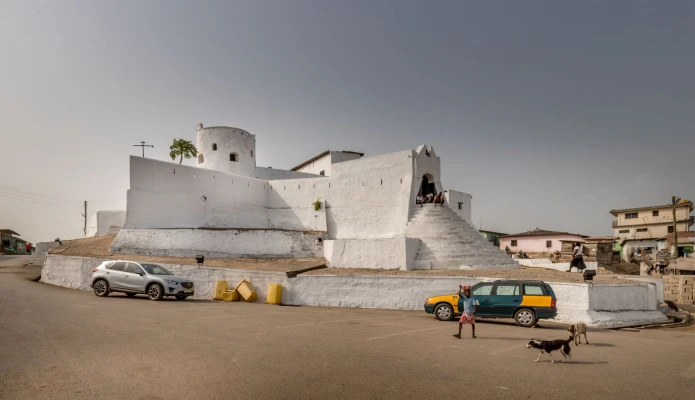Achimota Forest Reserve:...
November 20, 2023

Fort San Sebastian, situated in Shama in Ghana's Western Region, stands as a testament to the colonial history and strategic significance of the Gold Coast. Built by the Portuguese in 1526, it is one of the oldest European forts in sub-Saharan Africa and played a crucial role in the European competition for trade dominance along the West African coast.
The construction of Fort San Sebastian was initiated by the Portuguese as part of their efforts to establish trade routes and secure their interests in West Africa. The fort was strategically located to oversee trade activities, particularly in gold and other valuable commodities exchanged with local African kingdoms. The original design of the fort included stone walls and cannons, reflecting its dual purpose as both a defensive structure and a trading post.
Initially held by the Portuguese, Fort San Sebastian changed hands multiple times due to conflicts and power struggles among European nations. In 1642, the Dutch captured the fort from the Portuguese, marking a significant shift in its ownership. Under Dutch control, the fort underwent further enhancements and renovations, reinforcing its defenses and expanding its role in regional trade networks.
Throughout its history, Fort San Sebastian served as a crucial node in the trade network along the Gold Coast. It facilitated the exchange of European goods such as textiles, firearms, and alcohol for African commodities, including gold, ivory, and slaves. The fort's strategic location made it a target during numerous conflicts between European powers seeking dominance in the lucrative trade routes of West Africa.
By the late 19th century, as European colonial powers shifted focus to other regions and as Ghanaian kingdoms asserted their independence, Fort San Sebastian's importance declined. The fort fell into disrepair over the centuries, succumbing to the effects of weather and neglect. However, efforts have been made in recent years to preserve and restore the fort as a cultural heritage site, highlighting its historical significance and promoting tourism in the region.
Today, Fort San Sebastian stands as a symbol of Ghana's rich historical tapestry and its complex interactions with European powers during the colonial era. Visitors to Shama can explore the well-preserved ruins of the fort, including its stone walls, cannons, and historical artifacts. The fort's museum showcases exhibits that detail its history, the local cultures it influenced, and its role in the broader context of West African trade and colonialism.
Fort San Sebastian in Shama is more than just a relic of the past; it is a living testament to the cultural exchange, conflicts, and economic transformations that shaped Ghana's history. As efforts continue to preserve and promote its heritage, the fort remains a significant landmark and a window into Ghana's colonial past, inviting visitors to delve into its storied history and appreciate its enduring legacy.
November 20, 2023
April 2, 2024
June 26, 2024
June 19, 2024